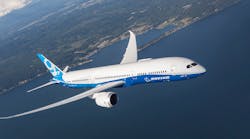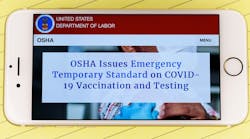New Rules for Transporting Cargo on Airplanes Configured to Carry Passengers
To help with global transportation that is being reconfigured due to COVID-19 interruption, passenger planes are now carrying cargo. For example, In just three weeks, United Airlines has already operated 270 cargo-only flights carrying more than 9.2 million pounds of goods on repurposed Boeing 777 and 787 jets.
In order to ensure the safe passage of this cargo, the U.S. Department of Transportation Federal Aviation Administration issued a Safety Alert for Operators (SAFO) on April 13.
This SAFO provides recommendations to operators that address considerations when performing safety risk assessments prior to moving cargo in airplanes configured with passenger cabins, in lower cargo compartments, and in the passenger cabin.
This SAFO contemplates the following four locations for carrying cargo on airplanes configured with passenger cabins without passengers onboard the airplane:
1. Lower deck cargo compartments.
2. Existing approved stowage locations in the passenger cabin.
3. Passenger seats located in the passenger cabin.
4. Floor of the passenger cabin (passenger seats removed), using seat tracks to tie cargo down.
Certificate holders that conduct operations under part 121 are already required to utilize their Safety Management Systems (SMS) to conduct a safety risk assessment. Certificate holders must also identify the hazards and develop appropriate controls to mitigate any associated risks.
Recommended Action:
Safety Risk Assessment Considerations. When conducting a safety risk assessment, the following are areas of consideration when applying § 121.285 to carry only cargo in the passenger cabin without passengers onboard the airplane:
1. Weight and Balance Manuals and a Certificate Holder’s Weight and Balance Program. Section 121.665 requires each certificate holder to prepare an accurate load manifest form before each takeoff. Consistent with FAA-approved weight and balance programs, identifying the cargo loads and positions helps to determine the accurate weight and balance for:
a) The overhead in stowage.
b) The designated stowage compartments (bins).
c) Bulkhead/Divider location and, if utilized, capacity identification.
d) Under-seat stowage not to exceed 20 pounds.
2. Fire Detection, Fire Protection, Fire Suppression, and Smoke Penetration. Due to the design of the passenger cabins, no smoke detection system exists within cabins of passenger airplanes, other than in the lavatories. For each airplane type that carries cargo in the passenger cabin, carrying one or more company employees would mitigate and address the following safety concerns:
a) Whether a person in the cabin will maintain the ability to detect smoke or fire.
b) Adequacy of existing cabin firefighting procedures, to include:
1) The location and number of fire extinguishers.
2) The sufficiency and location of firefighting equipment, such as breathing equipment.
3) Sufficiency of firefighting resources for Extended Operations.
c) Means of storing cargo so as to not hinder the use of emergency equipment.
d) Means to reduce the effects of smoke in the cockpit, given the absence of a smoke curtain.
3. Hazardous Material. Under § 119.49, certificate holders that transport hazardous material in cargo must maintain authorization from the FAA to do so. The FAA issues operations specification (OpSpec) A055, Carriage of Hazardous Materials, to indicate this authorization. Cargo that has hazardous Distributed by: Air Transportation Division materials in the lower deck cargo compartment only is acceptable when the certificate holder holds OpSpec A055 and the cargo is loaded and stored as described in the certificate holder’s approved safety risk management system. The certificate holder must adhere to the provisions of its applicable safety risk assessment and the operation restrictions, limitations, and applicable requirements codified in 49 CFR part 175 regarding the transport of hazardous materials.
General. The following are suggested precautions to carry only cargo in the passenger cabin without passengers onboard the airplane:
1. Weight and Balance Manual and the Certificate Holder’s Weight and Balance Program. Certificate holders should:
a) Ensure compliance with all load manifest requirements. Load manifests must be accurate and should be consistent with the manufacturer’s guidance.
b) Continue to ensure that only people trained to load cargo in the passenger cabin will supervise the loading of the cargo.
c) Continue to observe weight limitations for bins and compartments by ensuring that no cargo exceeds the allowable strength limits or load distribution criteria. Such consistency ensures the mass balance is controlled.
2. Fire Detection, Fire Protection, Fire Suppression, and Smoke Penetration. Certificate holders should:
a) For each airplane type, determine the appropriate company employee(s) to carry aboard the airplane to mitigate and address safety concerns.
b) Determine whether additional crewmembers are required to inspect for and respond to a cargo fire.
c) Make sure operational emergency equipment is available. Such equipment should be appropriate for increased risk due to a cargo fire (e.g., protective breathing equipment, other personal protective equipment, water extinguishers).
d) Ensure the flight crew is familiar with Quick Reference Handbook procedures to address cabin smoke or fire to reduce the possibility of smoke entering the flight deck in the event of a cabin fire.
e) For personnel who will respond to fires in the cabin, conduct training on variances from normal firefighting procedures and differences that may accompany higher-than-normal, closely packed cardboard boxes.
f) Limit the types of cargo to be loaded in the passenger cabin to cargo for which the content is known or has been verified.
3. Hazardous Material. Certificate holders should:
a) Follow the current approved hazardous materials program authorized via OpSpec A055. Distributed by: Air Transportation Division
b) Contact the appropriate FAA aviation safety inspector to update the hazardous materials program described in OpSpec A055 when they wish to use any new processes relating to the transport of hazardous materials. Such updates may also include additional information or descriptions of updates to training programs.
c) Prevent hazardous material packages from being inadvertently loaded into the passenger cabin
4. Crew Rest, Flight, and Duty Time. Certificate holders should ensure compliance with an approved Fatigue Risk Management Plan (FRMP). A certificate holder may operate under part 121 regulations applicable to cargo operations only when it is approved to do so within the certificate holder’s FRMP.



